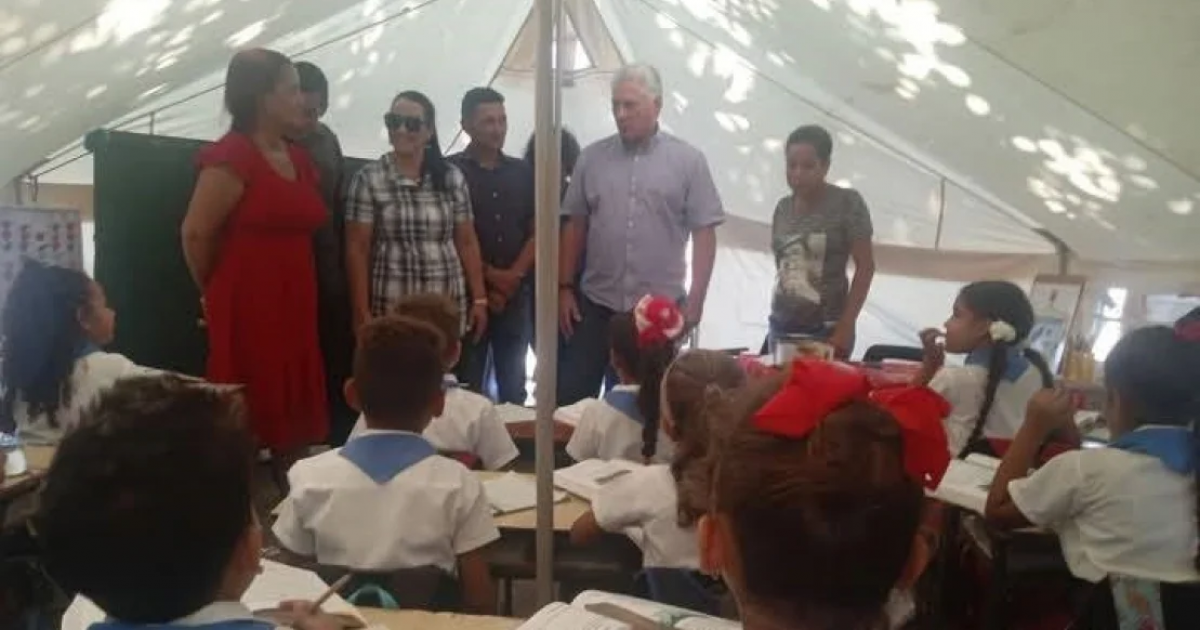In a recent visit, Cuban leader Miguel Díaz-Canel met with children in Pilón, Granma, who have been attending classes in tents since last November after two significant earthquakes shook the region. Over 530 young students, ranging from preschool to sixth grade, have been taking their lessons at a makeshift school named Amiguitos de las FAR, set up in a military base.
The temporary classrooms, provided by UNICEF, were established to compensate for the lack of educational facilities while awaiting repairs to their original school, Augusto César Sandino, which seems to face ongoing delays. During his visit, Díaz-Canel engaged with both the children and staff, commending them for maintaining the academic year despite the seismic disruptions and for educating students on responding to natural disasters.
However, Díaz-Canel refrained from providing any updates on the restoration progress or a timeline for returning to the Augusto César Sandino school. His only directive was to utilize existing facilities for housing affected families and to allocate construction materials based on priority needs.
The earthquakes on November 10 led to damages in 41 educational institutions, with only 23 currently restored to fully support the educational process, as reported by Amauri Torres Torres, the director of education in Pilón. The slow pace and resource constraints continue to leave hundreds of children in inadequate learning conditions.
Security Presence Contrasts with Official Narrative
Beyond Pilón, Díaz-Canel also toured the municipality of Niquero, accompanied by a convoy of at least seven vehicles. A video shared on social media captured the entourage's arrival in the community of Belic, where a group of residents awaited them. The footage revealed a heavy security presence, starkly contrasting with the official narrative that portrays Díaz-Canel as a leader closely connected to the populace.
Despite the regime's portrayal of these visits as demonstrations of solidarity, the images tell a different story. The leader's movements are notably surrounded by an extensive security force, a far cry from the modesty the regime claims to uphold, and a glaring contrast to the crumbling transportation infrastructure that ordinary citizens endure.
The expenditure on resources for such visits is a frequent source of criticism in a nation grappling with a severe economic downturn, food shortages, and deteriorating basic services.
Impact of Earthquakes on Cuban Education
What caused Cuban children to study in tents?
Two significant earthquakes in November caused extensive damage to educational facilities in Pilón, Granma, forcing children to attend classes in tents.
How many educational institutions were affected by the earthquakes?
The earthquakes damaged 41 educational institutions, out of which only 23 have been restored to a condition suitable for teaching.
What is the significance of the makeshift school name 'Amiguitos de las FAR'?
'Amiguitos de las FAR' translates to 'Little Friends of the Revolutionary Armed Forces,' highlighting the military's involvement in providing temporary educational facilities.
